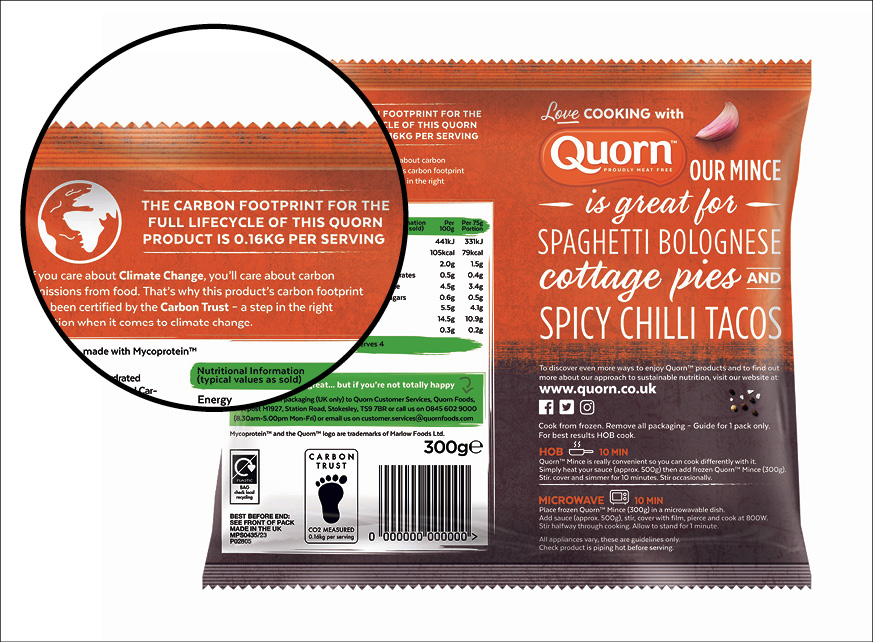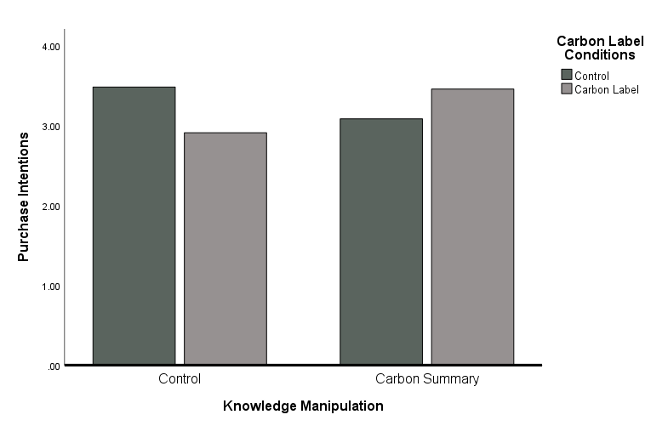Living sustainably: Student looks at how carbon labeling impacts environmentally conscious consumption

Nutrition labels tell us how many calories are in a cookie or whether an eggplant is organic. Now, there are some companies adding carbon labels to their products to encourage environmentally conscious consumption.
In 2021, the United Nations recognized climate change as a global-level threat, identifying individual consumption habits as one of the leading causes. Not the big corporations alone, but the demand created by consumers purchasing first-hand goods and factory-farmed foods.

“But despite that, our consumption rate has only been increasing. It has only been on an upward trend,” said Archana Mannem, a doctoral candidate in business administration at the Wayne State University Mike Ilitch School of Business. “The inflation rate reached 8.5%, an all-time high in the U.S., in March 2022. You might think that made us more conscious about consumption choices. It did not. Our consumption rate also increased by almost 18%.”
The statistics are alarming, underscoring the importance of educating the public on the daily choices that impact their environmental footprints.
Carbon labeling is a solution the U.N. has already begun to implement, one that Mannem, who studies marketing and consumer behavior, is hopeful will catch on in the U.S. and other parts of the world.
But will it impact consumers’ choices? Mannem conducted a study to find out and presented her findings at the recent 2023 Graduate Research Symposium.
Understanding carbon labeling
“A carbon label displays the amount of greenhouse gasses emitted right from the manufacturing of the product to its consumption and its eventual disposal,” Mannem said. “It is displayed in units equivalent to carbon dioxide emissions but is essentially a combination of all of the greenhouse gasses along with carbon dioxide. Think of it like a nutrition label. The problem is when we look at a label that reads 8.98 kg of carbon emissions, the average consumer doesn’t know what that means.”
 Mannem theorized that for carbon labeling to be an effective proponent or deterrent of purchases, consumers require knowledge of carbon emissions and a reference point, much like the 2,000 caloric daily intake value for nutrition labels.
Mannem theorized that for carbon labeling to be an effective proponent or deterrent of purchases, consumers require knowledge of carbon emissions and a reference point, much like the 2,000 caloric daily intake value for nutrition labels.
To test her theory, Mannem conducted a study with 233 student participants who were randomly assigned to one of two groups: one viewed a summary about carbon footprint values and what the figures on carbon labels mean, while the other viewed a summary on cryptocurrency. The participants were then randomly split again: one group viewed an advertisement for a t-shirt while the other was shown the same advert but with a carbon label.
Mannem then measured purchase intention. Those who did not view the statement on carbon labeling were less likely to purchase the shirt when presented with the label. This was no surprise, she said; consumers are less likely to purchase products with labels or product-related information that they find confusing.
“The current expectation in the market is that showing carbon labels will encourage consumption of the product because manufacturers are able to tell consumers it is a good product for the environment, but that was not the case.”

Those in the study who viewed the carbon label summary prior to the advertisement demonstrated no difference in their purchase intentions between products that had carbon labels versus those that did not.
Mannem thinks this largely due to lack of a reference point. “Now they know what the labels are, but they don’t know what they mean, whether the numbers are high or low, whether purchasing the product is a good or bad choice for the environment.”
Mannem hopes to conduct a future study with a larger and more diverse sample size where she can provide a reference point. An absolute necessity if manufacturers want their carbon labels to serve as little more than decorative packaging and encourage environmentally conscious consumption.
By Kristy Case